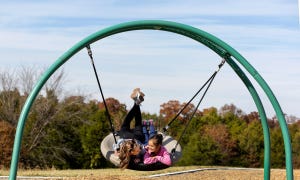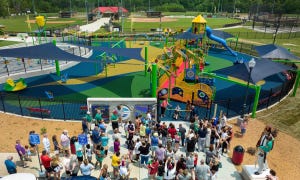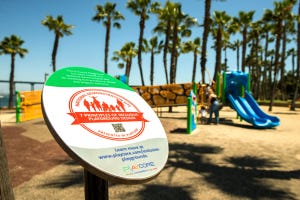This is part of a series of posts on the importance of school playgrounds and how to put research into action when designing a play space for students. Request information about PlayOn!, the standards-based curriculum for active school playgrounds.
The Science of Swinging Play
School communities are seeking valid ways to address childhood obesity and promote healthy lifestyles. SHAPE America conducted a national study to determine the effectiveness of utilizing Play On! - a standards-based curriculum that utilizes evidence-based playground activities, for promoting physical activity and fitness through active play. Approximately 6,000 children from 14 schools in 5 states participated.
Research results were overwhelmingly positive and indicated that Play On! was effective in promoting physical activity for children. The findings from the study revealed:
● 91% of teachers reported playground use increased when Play On! activities were utilized
● 90% of teachers plan to use the Play On! program in the future
● 25% of parents participated in more family activity after the Play On! program was initiated
● Nearly 100% of teachers reported Play On! motivated students to participate in regular, enjoyable, physical activity in a safe and supervised environment
Additional studies showed a direct correlation between increased physical activity on school playgrounds and improved classroom behavior and academic performance. For these, and many other reasons, we encourage schools to incorporate six essential elements of play (sliding, swinging, spinning, climbing, balancing and brachiating) to promote fitness. In this post, we will look at the benefits of playground swings and other products that promote swinging motion during outdoor play.
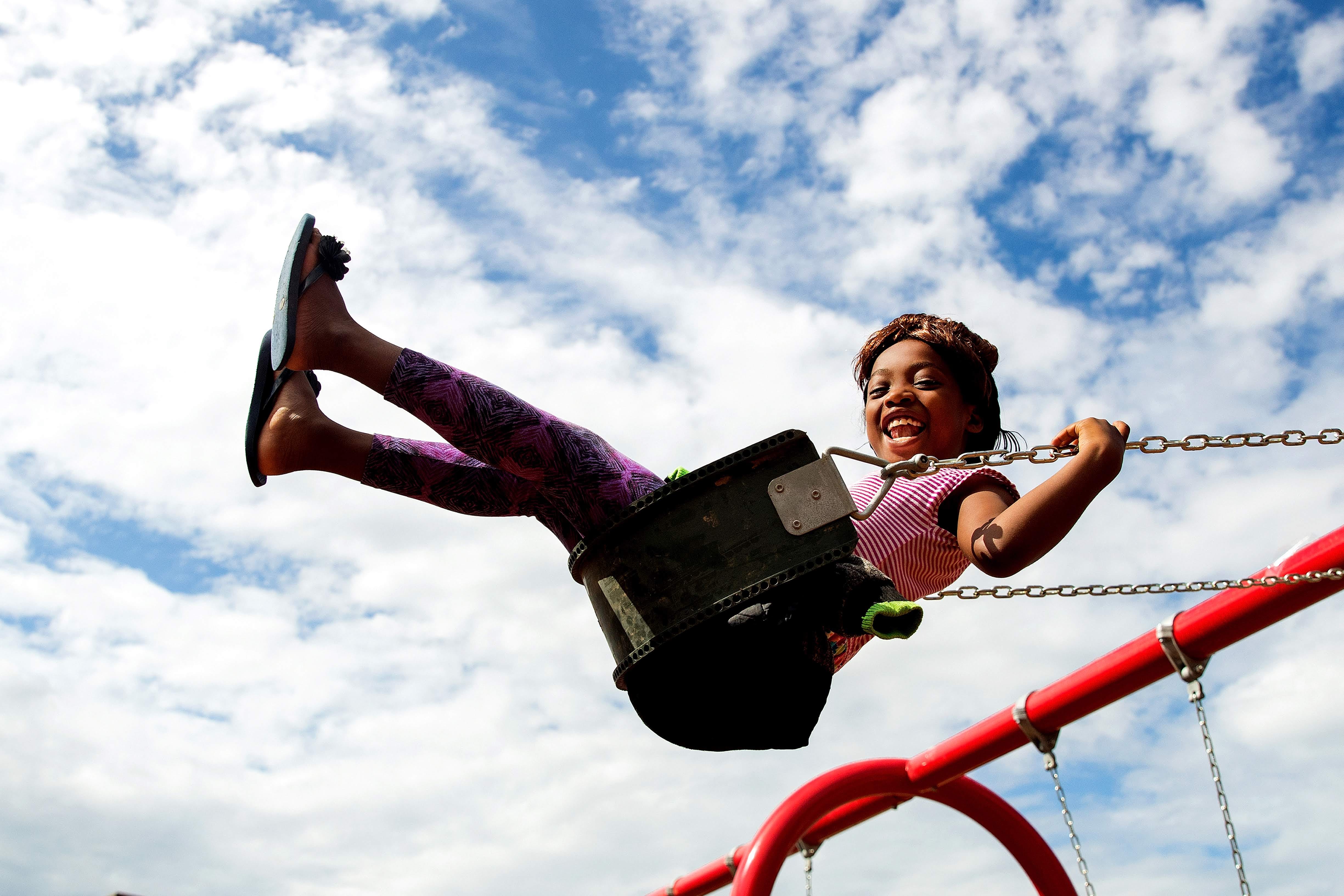
Benefits of Swinging Play
Dr. Joe Frost, author of The Developmental Benefits of Playgrounds, conducted research to demonstrate how swinging play is valuable to children developing physical, emotional, and social skills. Swings promote fitness and whole-body awareness through actions such as legpumping, and they offer opportunities for children to engage in sensory rich experiences that address rhythmical movement and stimulate the vestibular system- critical in developing balance and coordination.
As children swing, they learn the importance of timely energy transfer during movement, and they develop upper body and fine motor skills. Swings support cooperative play between users, as well as encourage dramatic and imaginative play.
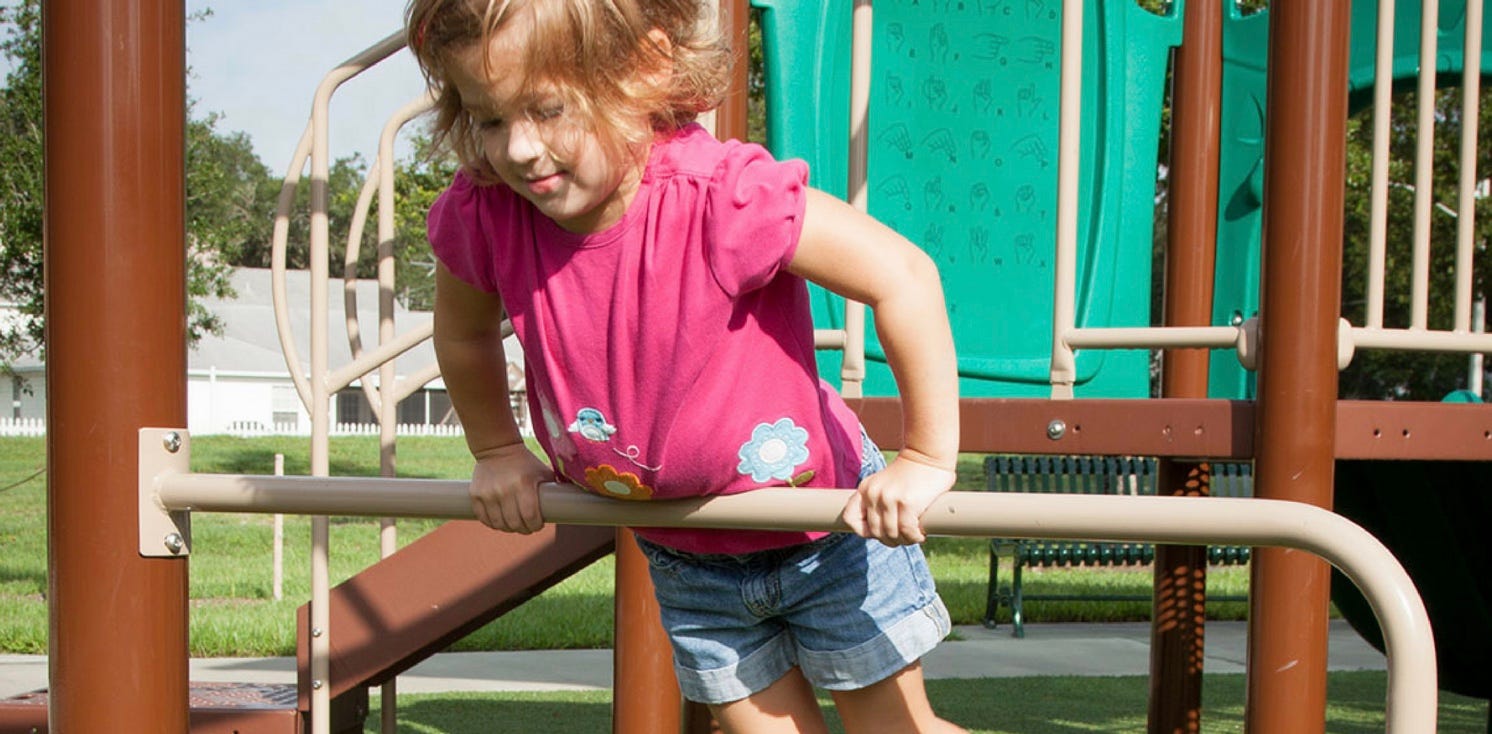
Types of Swinging Play
The first thing that comes to mind when people think of swinging on a playground is the traditional swing with a belt seat suspended from a pair of chains or cables. But there are a variety of other playground activities that can provide similar benefits of traditional swinging play- specifically that simulate the pumping of the legs to and fro to address fitness and muscular force. In addition to the traditional belt swing, there are multi-user swings (Expression Swing®) for two children, or an adult and child, to play together.
Other types of products, such as parallel bars or bannister rails allow children to lift their bodies, using their arms and core strength, and swing their legs back and forth. These activities provide the benefits of swinging play without the need for large use area.
What’s Next?
There are six essential elements of play–swinging, sliding, spinning, climbing, balancing and brachiating (overhead climbing). Play On! addresses each of these key play elements and how to incorporate them effectively into playground designsto promote higher levels of physical activity. If you can’t wait for the next blog post, request more information about Play On! or contact your local GameTime representative for ideas on creating the perfect school playground.
- Trails (27)
- Schools (192)
- Press Releases (109)
- Playground Funding (5)
- Play Science & Research (62)
- Parks & Recreation (360)
- Outdoor Fitness (138)
- National Demonstration Site (32)
- Landscape Architects (78)
- Inclusive Play (109)
- Daycare and Early Learning (62)
- Custom Play (38)
- College Campus (28)
- Churches (51)
- Challenge Course (30)
- Featured Projects (77)
- BluePrint for Play (18)
- Site and Shade (9)

